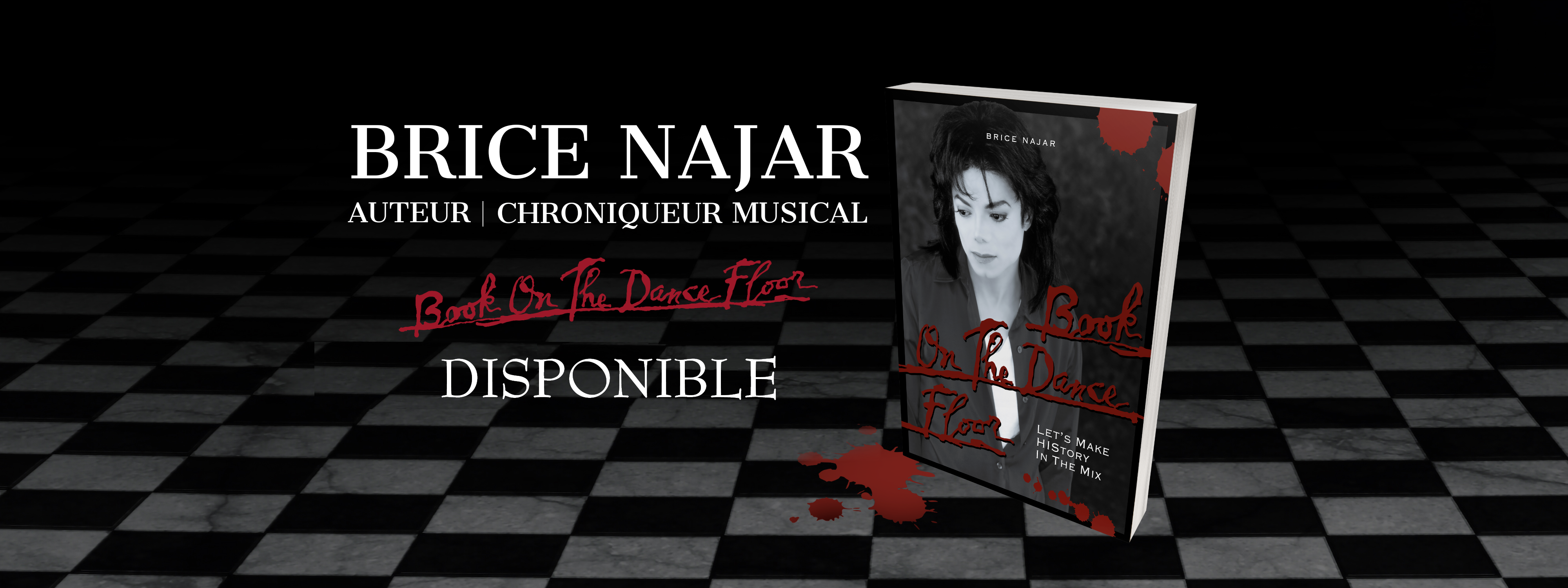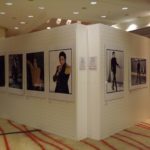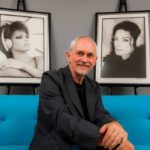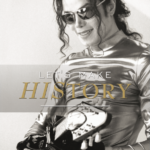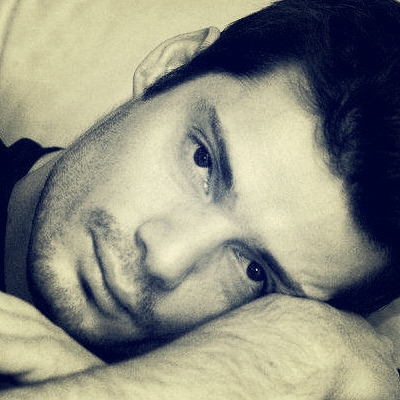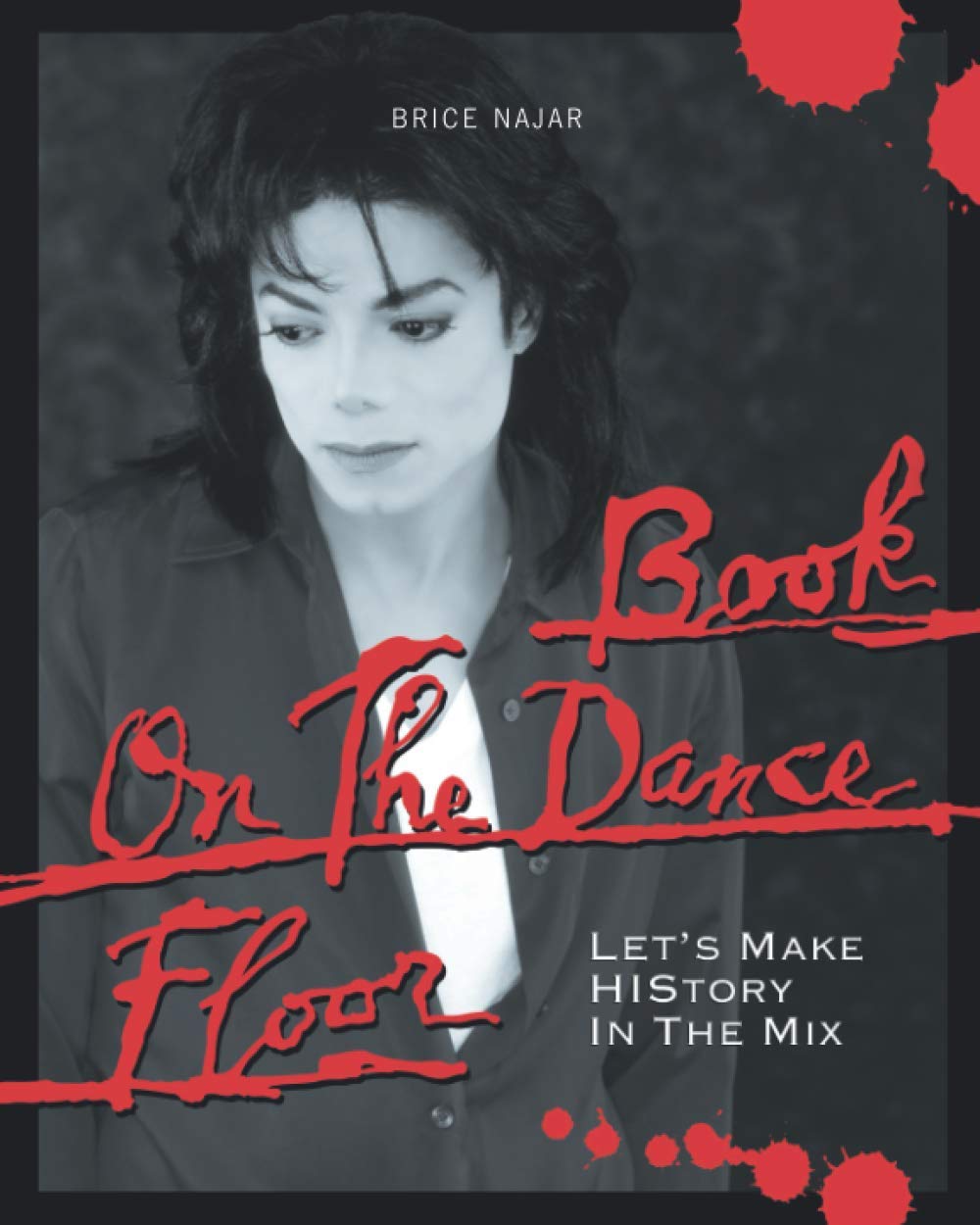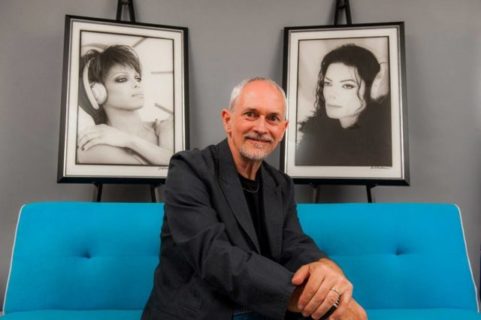
.
Steven Paul Whitsitt
While putting the final touches to my project « Let’s Make HIStory » I really wanted to find a quality picture from that era that would become the cover of the book and help giving it credibility. I did numerous research before eventually Steven Paul Whitsitt’s works caught my attention. Then, after choosing one of his photographs of Michael holding a guitar during the shooting of the Scream video, I decided I would ask the photographer to give an account of that collaboration. Today, I’m thankful to present it to the readers.
First of all, can you tell us how you grew a passion for photography and eventually made a career out of it?
Well, growing up, my father was an amateur photographer and whenever we would go on family vacation he would be like : « Ok, everybody! Stand there and smile ! You must smile, you must be happy! » (laughs) So I didn’t think much of photography back then but when I was in my teen years he took a class and a couple of times he took me to the dark room. I will always remember the very first time that I saw a black and white photograph in the developer. It was just magical and I thought that was the most amazing thing I had ever seen. Then, I spent 5 years in the military and I had to do something beside just… drink! So I took up a camera and I just found that I really enjoyed that so by the time I got out of the military my present to myself for surviving this was a trip to East Africa. I went to Kenya, Uganda… and while I was there I thought : « Ok, what am I going to do with the rest of my life? I love to travel, photographers get to travel. » So I decided that I would be a photographer. After that I went to school, got my degree in 3 years and then I went to Los Angeles and started my career.
How did you feel about Michael Jackson and his music prior to working with him?
I grew up in Michigan, in a small city just north of Detroit. To grow up there in the ‘60s and the ’70s there was just a constant soundtrack of Motown music with Diana Ross & The Supremes, Smokey Robinson and when The Jackson 5 came along they were just everywhere! I particularly remember when they had their cartoon – it was so fun and cute! But I never even just dreamed that I would ever meet him.
How were you contacted to work with Michael Jackson and what do you precisely remember of your first meeting with him?
Well, I got my degree in 1990 so that’s officially when my career started. So I looked around Los Angeles and I wanted to work for photographers who did the type of work that I was interested in doing – music, entertainment and all of that. Back in the days when I started, the trajectory of the career of a photographer was that you assisted other photographers – you helped them roll films in the camera, set up lights and stuff like that. In any profession there’s a community that develops and I had met another assistant and he called me up one day and he said : « I have this gig and I can’t make it. Can you cover for me? » I said : « Ok, what is it? » He said : « Well, it’s very exciting! It’s with Michael Jackson’s photographer. » I said : « Oh, ok!… Cool! » So I showed up at the gig and it was the Black Or White video! That day a couple of things happened. One of the first things that happened was that Paul and Linda McCartney walked up and I felt that was pretty extraordinary ! That day I think they were shooting the African dancers and then the next day they were shooting the Thai dancers. So I was working for Michael’s photographer and for some reason he liked me well enough that he kept me around for the next 3 years and I worked as his assistant through the Black Or White video, through going up to Neverland several times, the Oprah interview, the Superbowl appearance and stuff like that. Eventually he took me with him for one leg of the Dangerous Tour. I went with him to South America – Brazil, Argentina, Chile and then Mexico City.
At one point while I was assisting, I had one conversation with Michael. There was a particular time when we were up in Neverland and the photographer that I worked for forgot his jacket which means I forgot his jacket, of course. So we drove back to the theater at Neverland and I went in there to look for his jacket… and there was Michael! It was the first time that I had ever been alone with him in a room. I said : « Excuse me, Michael, I’m so sorry. I forgot a jacket and I came back for it. » He said : « That’s fine, Steve, that’s fine! » He remembered my name, he knew my name. I said : « You know, Michael, it’s really an honor to get to work with you! » He said : « Steve, it’s an honor to get to work with you as well. » That was a pretty special moment for me!
By that time I had been working in his organization and I knew a lot of people. So after the Dangerous Tour where I had met a woman in Brazil she sent me a gift to Michael’s office and the office called me and said : « Hey, we’ve got this package here for you. Come and pick it up! » So I went and they said : « We let go of the other photographer. » Since I had been working as his assistant I just kind of assumed that I would not see these people ever again… So I walked around the offices saying « Goodbye, it’s been very nice working with you… » And one of the people whose office I poked my head into was Bob Jones, Michael’s vice-president in charge of communication. He said : « Steve, come in and sit down! » We had a conversation and he was very nice to me. So I went home and about a week or so later my phone rings and it was Bob Jones’s secretary. She said : « Please, hold for Bob. » He came at the phone and said : « Steve, would you be interested in interviewing for the photography position? » In the world of professional photography, that does not happen. I always say it’s like if you’re getting surgery and the surgeon has to leave and they hand it over to the nurse saying : « Ok, you finish this surgery. » So I went on an interview with him and he said : « We’re going to send you to New York City. You’ll have the opportunity to do a photo shoot with Michael. If he likes you, if the chemistry is right, then you’ve got the job! And if not, well… » That’s the kind of thing that I really love because I only want to be successful by my own merits. I don’t want to be successful because someone knows someone or whatever, you know. I want to have the chance to say : « Ok, this is who I am, this is the work that I do. If you like it, great! If you don’t like it, that’s fine too! »
Well, I had never in my life been to New York City and I needed to produce the photo shoot. So I needed to put together all of the elements that are necessary to make a photo shoot happen. I had to have a studio, I had to have cameras and equipment, I had to have lightning equipment and backgrounds, I had to have catering, I had to have a place for me to stay and a place to process the films… Thankfully one of the other photographers I had assisted for, his name is Neil Preston, guided me and told me all the things that I should do. He’s an extraordinary photographer who taught me so much and I owe a lot to him. So the day came when I was in New York and I was ready to do my photo shoot. Of course, I was a little nervous and I thought to myself : « What is the reason why I chose this as a career? » And what I came up with was : « I became a photographer because it’s fun! I want to make sure that I have fun doing this! » That was my motivation.
So Michael got there. I said : « Thank you so much for this opportunity. » We started the shoot and when we got a break I noticed that Michael was standing alone. So I went over and talked to him. I said : « Thanks again so much, Michael. I hope that you’re having a nice time. You know, when I was in 6th grade, the whole year I sat next to a girl named Katerina Thompson and we had an argument over who was cooler – the Jackson 5 or The Osmonds. And I tell you, Michael, I had you back even then! » He laughed and he thought that was really funny! It sort of broke the ice and created warmth between us. On that very first shoot Michael was wearing a military coat with gold braid on the shoulders and when we finished the shoot, Bob Jones came to me and he said : « I don’t know what you said to him but he likes you! So if the pictures are good, you’ve got the job! » So I developed the pictures and I got the job!
Did the fact that you started collaborating with him in 1994 while he was working on a new album allowed you to witness the artist at work?
I didn’t get to see him actually inside of a recording booth or anything like that but he did a lot of the recording at the Record Plant in New York. What would happen is that I would fly in usually on a Thursday or a Friday, we would shoot on Saturday or Sunday, and then I would fly back on Monday. So sometimes he would be in the studio and I would go in and have a conversation with him. There’s actually something that I saw the recording that I had never seen released. It was him and a children’s choir, and I would recognize the song if I heard it. But I’ve never heard it so I don’t know what happened to that – I’m sure it’s in the archives somewhere… I remember one time being with him in the studio where he had some sort of a private office there that we used to sit and talk, but this time we were in a more public area and they were playing back the song that he had been working on. And as soon as that music started his attention was gone from me ! We were talking and making eye contact but as soon as the music started he was aside. It was interesting for me because we see thousands of things go passed everyday and when I’m on the internet I’m reading stuff but I’m looking at visual images. I’m looking at them for quality, for something I’ve never seen before or whatever. That’s the thing that distracts me. What got Michael was the music and if you were trying to talk to him then you had just lost him! I still work with a lot of musicians to this day among which a Jazz sax player, Marcus Anderson, and it’s very similar. We talk about a lot of different things but when music is playing that’s where his attention is.
You were with Michael in Budapest in August 1994 for the shooting of the HIStory teaser. Can you explain what your role and tasks were, both during that shooting and the travels he made through Hungary?
Well, they told me I had the job but they didn’t really say when or how it would start. So my life continued on very much as it had before I did the test shoot with them. Then, one day my phone rang and it was Michael’s Head of Security. He said : « Steve, Michael wants to talk to you this afternoon. Make sure you’re home. » I thought : « Michael wants to talk to me. I guess I’ll stay home! » (laughs) So I stayed in my apartment and sure enough about 2 o’clock in the afternoon, the phone rang and they said : « Hold on for Michael. » He came on the phone and he said : « Steve, I need you to fly on a red-eye to New York where we’re going to do a photo shoot with myself and Lisa Marie. And then we’re going to fly to Budapest to do a shooting. » He didn’t really tell me what it was going to be or anything about it. That’s kind of pretty much the way that it would always work with Michael and often the way that things have worked in my career. As a creative person you have to be able to just show up and have the confidence that – no matter what is going on, no matter what the situation is – you have to make something happen. I didn’t have any idea what I was stepping into in Budapest – I just knew that I had a job to do.
So I flew to New York and we did the photo shoot with Michael and Lisa Marie – it was kind of a wedding announcement picture although they were already married. There was another photographer there and it was Lisa Marie’s photographer. When he saw me he was like : « What are you doing here? There’s not supposed to be another photographer here! » I thought : « Ok. Michael asked me to be here. So I have every reason to be here. » He was also mad because I had an assistant and he didn’t. So I said : « Look ! We’re going to be shooting at different times so use my assistant! I don’t care. Use everything that I brought with me – I don’t care. I am not a threat to you. You don’t have to feel threatened by me. » By the end of the day he shook my hand warmly and said : « Wow! Thanks so much for all your help! I really appreciate it. » That’s something that I have tried to carry with me. There are a lot of times when other photographers are around and I think I don’t have to feel competitive with anyone or threatened by anyone. Things will work better if I make them not feel threatened by me. That’s something that I try to do.
The next day we flew to Budapest but my memories are sort of blurry because it went so fast!… At that point it was the first time that I had been Michael’s photographer in that situation and I was still trying to figure out what my role was and how much interaction he wanted with me in that situation. The director of photography came up to me and said : « I want to know how you light Michael. » I was like : « Gosh! You’re the director of photography! » Those guys are generally geniuses when it comes to lighting and so on and so forth but he listened to me and I was very humble by the fact that he asked me. As it turned out several times on music videos, the director of photography would come to me and say : « How do you approach lighting? » and all that stuff. It was always a big honor to me. I remember we did a steel pour in a steel mill just outside of Budapest. Michael wasn’t even there that day but that was so cool ! I always try to not just see what’s going on in front of me but to go around and capture the environment. So when we were doing that steel pour, I walked around and I did all these environment portraits in black and white of people working in the steel mill. To this day they’re still some of my favorite portraits that I’ve ever shot. That didn’t have anything to do with Michael but I just try to always work on my own personal stuff and have my own personal vision of things at the same time that I’m doing the job that I’m hired to do. I never stop singing, I never stop looking at things…
While we were in Budapest there were always lots of fans from Europe following Michael and I was fascinated by that. They knew he would come out of the hotel so they would be standing outside and all of that. I got kind of teased a little bit by some of the people on the crew because I would stop and have conversations with these kids. The reason why was because I just think that it’s interesting that somebody would spend a lot of money to follow on somebody all over the world. On a philosophical level I don’t like to ever place myself above anyone and so while a lot of people on the crew would sort of look down on the fans, I would have conversations with them about what they wanted out of life and what their dreams were. I became friends with a couple of them and I’m still friends with them to this day. I remember seeing some of those fans in Budapest and I then had a completely different position. One fan in particular lives in Madrid and we are in contact once every month or so. We’ve known each other since 1993 now, so that’s a long time to know somebody!
You took a lot of pictures during the shootings of the videos for Scream, Childhood and You Are Not Alone. Can you tell us more about your work method with Michael while he was surrounded by many people (director, choreographer, make-up artist…)?
It was not particularly difficult but I sort of feel that my role as a photographer is that I don’t want myself to be the center of attention. I want the photograph to be the center of attention, I like to create the center of attention but I don’t need the attention to be on me. I’m much more comfortable having my role being smaller. There’s something that has developed in my personality and in my way of moving through the world that I just kind of blend there. I approach things with this confidence that I’m supposed to be here and there’s something in my energy that makes people just kind of accept that I’m supposed to be there. So I get to move into a lot of places and a lot of times it’s not that people don’t notice me but they just sort of accept me as belonging. I think a lot of that developed working on the music videos because I got to see it a little bit while I was doing the assisting. You just move carefully, you’re respectful of people, and obviously you never walk in front of the camera when the video is shooting. If you don’t know about something, then ask somebody!
As far as my interaction with Michael I sensed that he didn’t need to have a lot of interaction with me on the video. When there was a moment free to talk to him I would say : « Michael, do you have a moment? » and I would talk to him. On the Scream video, I think the shooting lasted for 15 days or so and every day my assistant would go and wrap off the film and get it processed, and then come the next day and hand me the film. You can see two of these photographs in the background on the video I made for the Kingvention 2016 Exhibition – they are two framed photographs, one of Janet and one of Michael. The story behind those is that I had shot these pictures and the next day I was showing Michael the contact sheet of all the negatives. He had a red pen and when he saw the picture of Janet he put a big circle around it. Then he saw the picture of himself and he put a big circle around it. Then he said : « What’s the largest print that you can have me of those? » I said : « Probably about 20×30 before they start to lose quality. » He said : « Ok. I would like you to do a test print. » So I did a test print of each one in my lab and showed them to him, and he said : « That’s fantastic! Now, I want a picture for myself and I want a picture for Janet of the one of Janet. Then I want a picture for myself and I want a picture for Elizabeth Taylor of the picture of me. » So I did that and I made also a print for myself of the same size! Of those two prints, there are only a few that exist in the whole world – I have one, Michael had one, Janet has one and I assume that Elizabeth Taylor’s Estate has one… Those have been hiding in my archives and just recently I got them framed. If somebody came along with the right amount of money I would probably sell them but they’re obviously very rare and valuable.
The point is a lot of times with Michael there would just be like 5 minutes to talk to him and show him the pictures or whatever but what I realized was that I didn’t need to be validated by constantly interacting with him. He had a lot on his mind, he had a lot going on so I was there to do a job and it was about being professional.
On the shooting of the Scream video Michael posed showing his middle finger. How did that unusual gesture occur?
It was very spontaneous! They were filming when he did that and that was the scene where the camera was really really tight on his face. At some point they had something to shake it and basically he was just making faces and doing all kinds of stuff at the camera. He gave the camera his middle finger and I just happened to capture that ! And I’m happy that I did because I think that’s an important photograph of him. Still I don’t know when that picture got published… But we’ll go back to that later on.
I also like a lot the picture of Michael holding a guitar. Did you give him directions or was he partly free to act as he wanted?
Virtually, everything that’s from the video(s) is me trying to be in the right place at the right time and absorbing what he was doing and capturing it. The only things that I really gave him directions for were things while I was shooting. So when I came in, the set was there with all the guitars lined-up and they told me that he was going to smash the guitar. Obviously I was really exciting about that! You know, Michael was not a guitar player so there’s a couple of pictures of him picking up the guitar and playing it, and as I was photographing and seeing it I thought : « Wow! This is really good! » So I was just looking for the right angles and the right moments. There’s one where he’s just got a smile on his face and he looks genuinely happy – that’s really cool! Then when he smashed the guitar, I was about 6 feet away from him and I have a series of pictures from when he holds the guitar way over his head to when he smashed it down, and one with the guitar in front of him afterwards. One of the things that I’m going to do one of these days is create like a collage of images of those and release them. When the guitar broke, a piece of it landed at my feet and I still have it in a box. So what I’m going to do is create like a little shadow box with that piece of the guitar and that’s something the fans will be able to see one of these days.
You also made a photo shoot with Michael dressed up as Charlie Chaplin for the Smile single. Can you share your memories of that one?
Oh, it was such an extraordinary experience! I was in New York and Michael called me up at my hotel saying : « Steve, I want to talk to you. Do you have a moment? » He was staying in Trump Tower so I walked over and when I got there, we talked about a few different things and then he said : « Do you know the song Smile? » I said : « I think I do. » He said : « I’ll sing it for you! » So here I was all alone with Michael and he sang Smile for me a cappella and that was probably one of the most extraordinary moments I had with Michael. While he was singing I didn’t know if I was supposed to be looking at him or… you know ! His voice had such purity and he sang it without warming-up or anything. And then when he was finished, he said : « That song. » (laughs) I said : « Yes, Michael, of course I know that song. Thank you! That’s amazing! » Then he went on : « Did you know that the music for that song was written by Charlie Chaplin? » and I said that I had no idea. So he proceeded to tell me all about this song and about the Chaplin film « The Kid », and that was really interesting. He told me about the child who was in the film playing the kid that is Jackie Coogan. He said : « You know, I owe a great debt to Jackie Coogan. Because of him the laws in our country got to treat child performers as human beings. »
Then he opened up a book and he showed me a picture from that film and he said : « I want you to cast a child and hire a set builder to build a set that looks like this. » This was probably the most explicit that Michael had ever gotten with me as far as « This is what I want to do. » So it probably took about 3 months to put all of the different elements together because in my role I also had to produce it. I set it up and we put a date together to do the photo shoot in New York but I didn’t want to just do the photo shoot that he wanted – I wanted to do a couple of other things. I’ve always been a big fan of Andy Warhol so I told Michael : « Let’s do a series of tight head shots of you in the spirit of Andy Warhol where you’re in the Chaplin outfit but when you’re just kind of rolling your eyes and raising your eyebrows and moving the moustache around. » So we shot those as well, we shot the cover and then we shot a variation of the cover of him holding the young child… It was pretty magical and the whole experience was really great ! But to get to do something and see it all the way through like that was wonderful!… Then I turned it over to Michael’s people and months passed, and they didn’t call me up and said : « Ok, this is coming on such and such… » or whatever. What happened is they released it in one country in Europe and Charlie Chaplin’s Estate had a hold on Michael and they said : « We’d prefer that you’d not do this. » Because Michael’s respect for Chaplin was so great, he just pulled it. That’s why that’s probably the rarest of Michael’s singles – I don’t even own a copy myself. I would love to but I don’t have the means to go up and spend thousands of dollars to buy one. Still it makes me a little bit proud that I have something that’s so rare that I shot but at the same time it makes me sad… When I’m listening to the HIStory album and that single comes on, it definitely makes me very, very emotional…
Nowadays, your pictures of Michael Jackson are known worldwide and appear a lot on social networks. What are your feelings about this?
It’s a very difficult thing because I absolutely love the fans and I understand that they have varied degrees of feeling like an ownership of Michael’s legacy. But to take something that is my image that I created and to reproduce it without any permission, without being given any kind of acknowledgment or any kind of payment, this is just something wrong. I think that this is one of those unfortunate things in our culture today – that people don’t have respect, people would copy pictures or art. They don’t have any realization that it actually hurts the artist that created it. What I’ve seen of that particular image reproduced is that it’s not reproduced in a very good quality. And then somebody else will come along and reproduce it from that and so on, and it sort of destroys the artistic value of it. I mean, wait a minute! That’s my work that you’re putting out there and it looks not as good as I created it. That makes me sad and frustrated because there is not a lot that I can do about it. I can’t spend my whole life sending lawyers after people because that’s not going to get me anything. I wish that the fans would just understand that the picture they reproduce, well, somebody took that and at the very least they should give credit. But actually what they should do is respect it enough to say : « That’s not my property. I don’t own the rights to that. »
What do you think of the HIStory era you experienced with Michael Jackson? How do you consider that particular period of his career and life?
Obviously it’s the era that I worked as Michael’s photographer and to put it in a context, for me, I spent a lot of time then just thinking « Pinch me, I must be dreaming! », you know. To this day, when I meet people, I don’t want them to know about the fact that I used to work for Michael, and not after they’ve known me for a while. If people know that before they meet me, then they sort of have a preconceived idea of who I am and what I’m about. And I don’t think that I am what a lot of people’s preconceived idea about me is. I think of myself as a guy who grew up in a small city in Michigan and who nothing exciting was ever supposed to come to. I don’t know how I got so lucky as to have the things that happened that did but I don’t take it for granted. I am continuously amazed by it and I think that it’s really lovely – I’m very, very fortunate!
As far as the context of Michael’s career, it was a really, really special time. I think that the videos he was creating were extraordinary and the music he was creating at that time was just amazing! I feel like he was really beginning to think about himself and his whole legacy. Here’s a story to illustrate that : when they were putting the final artwork for the HIStory album, I was in New York and Michael called me up. He said : « Hey, come over to the apartment! » So I did and there were him and Dan Beck who was one of the vice-presidents of Epic Records. He and I were friendly – we knew each other and had met several times. So it was just the three of us in Michael’s apartment and we were selecting images that would go into the final booklet for the album. We started talking about the Thriller video and Michael said : « Steve, here is a bunch of pictures from that : tell me what I should put in the booklet? » So here I was with that large stack of slides pages from Thriller – which was before I ever worked for Michael – but he trusted me and trusted my eye to select which images that should be. So I went through all of them and looked at them, and said : « Ok, Michael, let’s do this one, this one… » and those were the images that ended up being in the booklet. That’s not something that I get a credit in the album for but I’m still honored to this day that Michael trusted me enough to say : « What do you think? » That means a lot!…
There’s a question that doesn’t get asked but I think that it’s an important one to ask anybody that worked with Michael and anybody that’s a serious person. That is : « What does Michael’s legacy mean to you? How do you carry his legacy in what you do today? » Because we still look at the work of Michelangelo and we think about what he was thinking when he did that painting or creating that sculpture. And I feel like hundreds and hundreds years from now, hopefully, we will be looking at Michael’s work and people will be saying : « What was it about this artist that made what he created so extraordinary? » And maybe one or two of the pictures that I shot of him will have survived to decades or hundreds of years from now. So I think about : « How did Michael’s life and the work that I did with him touch me and how does it affect me? »
What I realized is that I never once saw Michael be unkind and I never heard him speak of somebody in a bad way. He was angry when people did him harm but he didn’t strike back at the person personally. I was always amazed by that… The other thing is that with race and with religion, Michael set an example for me of loving and accepting everybody. That’s not the only thing that’s influenced me but certainly the work that I did with Michael – for instance on the video sets and other things where we would have people of every nation, every ethnicity, every sexual orientation… – it wasn’t about differences : it was about everybody coming together. That’s been a huge influence on me!
When people meet me and they found out that I worked for Michael, they are evaluating me as such and I try to represent myself in that way. I don’t want people thinking negative things about Michael and at the same time Michael was human. He wasn’t perfect, he did make mistakes but even in his worst moments he was always kind and very, very respectful of me. We didn’t have a ton of conversations but we had some conversations about some really, really personal stuff and I don’t have anything negative or bad to say about any interaction that I had with Michael.
So that’s what he left me with… And three days before he passed away we found out that my father had cancer. The day that Michael passed away I was leaving to go up to Michigan to see my father and spend the six last weeks of his life with him… So Michael’s death and my father’s death are kind of chaptered in my life and sort of go together. The newspaper in the town that I grew up in ran a story about me that I was able to bring in and hand to my father on his hospital bed. It was one of the best moments that he and I shared together… So there’s a lot of really, really deep personal stuff tight to my relationship with Michael…
